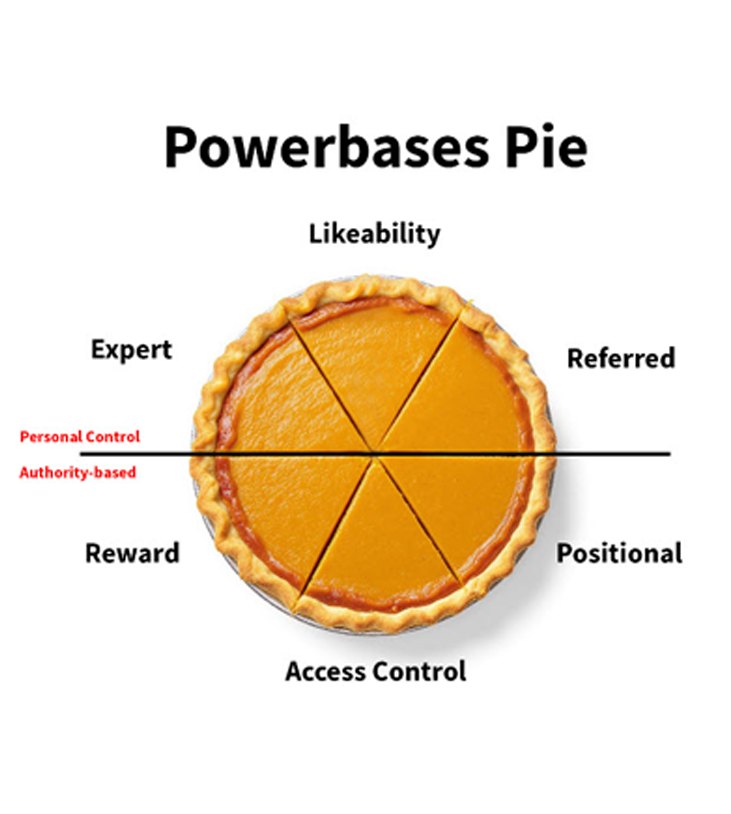The Powerbases Pie Model
The Powerbases Pie Model is a new take on understanding and harnessing personal influence, depicted as a pie chart divided into six equal slices: Expert, Likeability, Referred, Positional, Reward, and Access Control. A horizontal line labeled "Personal Control Authority-based" splits the pie, emphasizing a balance between self-driven and authority-derived power. Unlike traditional models, this framework challenges the notion of power as a fixed or solely hierarchical concept, suggesting that the entire pie should be "eaten whole"—meaning individuals should strive to maximize their influence across all bases.
Understanding the Model:
Six Powerbases: Each slice represents a source of power:
Expert: Influence through knowledge and skill.
Likeability: Power derived from being approachable and well-liked.
Referred: Authority gained through endorsements or reputation.
Positional: Influence from a formal role or title.
Reward: Power to offer incentives or recognition.
Access Control: Ability to manage resources or opportunities.
Personal Control vs. Authority-based: The dividing line highlights that power can stem from personal attributes (e.g., expertise, likeability) or external authority (e.g., position, rewards), encouraging a holistic approach.
Challenging Traditions: This model departs from conventional powerbase theories by excluding force, arguing that all bases—including likeability—can be used for good or exploitation. It posits that power is neutral, and its impact depends on how it’s wielded.
Maximizing Power: The goal is to develop all slices fully, treating the pie like a radar or spider chart. Assess how much of each slice you currently "eat" (i.e., utilize) and identify ways to expand your influence. This is especially valuable for leading without authority, a common challenge for individual contributors or support teams.
Responsibility and Ethics: In an era of power mistrust, the model asserts that influence is essential for leadership and progress. It urges individuals to become as powerful as possible while using that power ethically—benefiting others rather than serving selfish ends.
The model suggests that avoiding power limits your ability to effect change, while embracing it responsibly amplifies your impact.
The Powerbases Pie Model offers actionable ways to enhance leadership and influence:
Self-Assessment: Evaluate your current power distribution. On a scale of 1-10, rate your expertise, likeability, etc. Plot these on a radar chart to visualize strengths and gaps.
Skill Development: Focus on growing underutilized slices. For example, enhance expertise through learning, boost likeability with empathy, or seek referrals to build referred power.
Leading Without Authority: Leverage top slices—expertise, likeability, and referred power—to influence peers or teams. Share knowledge, build relationships, and gain endorsements to drive outcomes.
Ethical Application: Reflect on your power use. Are you offering rewards to motivate or manipulate? Use access control to open doors for others, not just yourself. Regularly ask, “Is this for the greater good?”
Team Collaboration: In group settings, encourage team members to assess their own pies. Discuss how combined powerbases (e.g., one’s expertise with another’s positional power) can achieve shared goals.
Continuous Growth: Revisit your pie periodically—perhaps quarterly—to adjust and expand slices, ensuring you’re maximizing influence while staying aligned with ethical leadership.
By embracing the Powerbases Pie, you can overcome power-related hesitations, lead effectively in any role, and use your influence to create positive change in the world.
